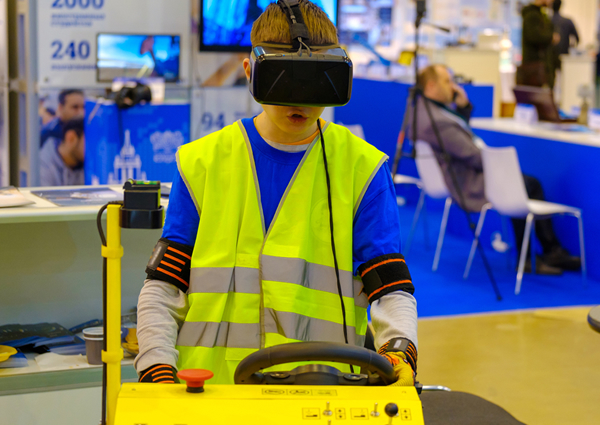Is Gamification the Future of Construction Recruiting?
Author: Dan Stout | April 21, 2020
The construction industry depends on a steady stream of new workers who are eager to learn their trade while providing the bulk of labor on a jobsite. But as society and workers evolve, construction recruiting techniques have struggled to attract the best of the next generation.

This employment crunch is nearly universal. In a 2019 Associated General Contractors of America survey, almost 80 percent of respondents reported that they anticipated a need for more workers and that they were struggling to fill those roles.
It's only logical that construction pros are turning to new ways to help recruit and train new hires. One technique is "gamification," a buzzword that describes taking a job and making it fun. It's an old concept, but modern technology can help gamification boost your recruiting and improve performance for your newest commercial roofing hires.
Virtual Commercial Jobsites: Simulators and VR
Simulators run the gamut of realism, from cartoonish to complex systems designed to truly test a player's limits. If you've sat behind a plastic wheel of a NASCAR arcade game, you've experienced a simulator. A more extreme example is the full-scale cockpit replicas used by the military or NASA for flight training. For equipment manufacturers such as Komatsu or CAT, a simulator lets trainees try tasks like running an excavator without risking damage to the machinery or surroundings.
Some simulators incorporate virtual reality (VR) to create an immersive, virtual world where users can experiment safely. VR environments, such as this high-rise simulator from equipment manufacturer 3M, recreate a jobsite with real-world physics that lets trainees practice safety techniques without risking a fatal fall. A simulator is the only medium where a roofer can safely make the mistake of forgetting to clip their fall arrest harness lanyard to a line, and learn for next time.
AR, Apps and Low-Tech Ideas
While VR creates an entire world from scratch, augmented reality (AR) places an additional layer over the existing world. Usually accessed through a phone screen, AR places call-outs and graphics onto the user's line of sight: Imagine walking through a jobsite and seeing project details dance across your safety goggles. Business Insider reports that this concept is driving manufacturers such as Tesla to incorporate AR into safety glasses on the factory floor.
You don't have to cough up the big bucks for a fake excavator or smart glasses to take advantage of simulation technology. Search "construction simulator" on your phone, and you'll find hundreds of apps that allow users to test various tasks and equipment.
Gamification also doesn't need to be high-tech. Any parent who has offered their third grader ice cream for getting straight A's is practicing gamification, as is any sales office with a weekly or monthly leader board. If you want to test the waters of gamification, a competitive chart for your roofing sales team or or multiple jobsite crews is a great entry point.
The Right Solution for Commercial Roofers
For many employers, the gamification sweet spot lies with the standard smartphone. Today's apprentice roofers have never lived in a world without cell phones and touch-screen games, and many of them are familiar with leveling up and reward tiers. Custom apps that track tasks can run on employees' phones, eliminating the need for expensive hardware investments.
Whether through bulletin boards or full VR rigs, gamification rewards trainees with badges, streaks and achievements. By wrapping construction recruiting inside a game, you're speaking to young potential employees in a language they understand, while making their introduction to the roofing trade fun and engaging. It's a way to embrace the changing world and get a leg up on the competition as you identify and train the next generation of pros.